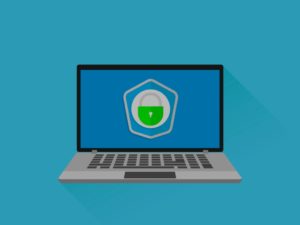The Microsoft Surface Pro, iPad 4, and the Nexus 10 are all great and revolutionary tablets, but which is better for the workplace? Ever since the release of the 1st generation iPad, businesses have made a slow and steady turn toward having tablets in their arsenal of technology, but why?
Once the future of portable PCs, today laptops can be considered big, heavy, expensive…and unless you are on the high-tech side of IT or a graphic designer, you are probably using your laptop primarily to check email, browse the web, VPN and use Microsoft Office. So why carry something around that is so bulky and needs its own carrying case when there are other options? In essence, laptops are too bulky, smart-phones are too small or restricting, and PC towers were not designed to be portable. This is where the tablet comes in.
The tablet PC, or simply tablet, has been around for some time but was revolutionized and made a modern household item when Apple introduced the iPad in 2010. Since then, the competition has worked furiously to catch up and make solid tablets that are great for both the consumer and the professional. In addition to the Nexus 7 and 10, the new Microsoft Surface Pro has quickly proven itself to be a strong alternative to the iPad 4. So which one is the best for the workplace? To start we will need to at look at the guts.
The Insides
iPad 4 (the 4th generation of the iPad):
OS: iOS 6
Display Resolution and Screen Size: 2048×1536; 9.7-inch display
Chip: Apple Dual-Core A6X
Memory: 1024 MB (1GB RAM)
Storage: 16GB, 32GB or 64GB
Best for: The everyday web surfer
Microsoft Surface Pro (not to be confused with the Surface RT):
OS: Windows 8 Professional
Display Resolution and Screen Size: 1920×1080; 10.6-inch display
Chip: Intel Core i5
Memory: 4096 MB (4GB RAM)
Storage: 64GB or 128GB
Best for: Those who are always working
Google Nexus 10 (The bigger, Samsung, bolder Nexus 7):
OS: Android 4.2 Jelly Bean
Display Resolution and Screen Size: 2560×1600; 10.1-inch display
Chip: Dual-Core A15
Memory: 2048 MB (2GB RAM)
Storage: 16GB or 32GB
Best for: Google Fans
The Attention Grabber
On paper, each tablet has its advantages: The iPad 4 is beautiful, the Surface Pro has a metal kickstand, and the Nexus 10 makes Apple’s Retina display look ordinary. Realistically, a consumer’s tablet is mostly used for web browsing, checking email, games, games, and lastly, more games (all three featured devices are capable). This is OK, and yes, a tablet is capable for actual work, but to what extent?
The iPad and Nexus do have a very large app store (Apple Store and Google Plus) and there are many compatible apps to help you work on your PowerPoint presentation, email clients and co-workers, log onto your company server, etc. However, this is where the Surface Pro thrives with its full-blown Windows 8 Professional operating system. Instead of apps or third-party applications, you get the actual software.
The Workplace
Not to be confused with the Surface RT, the Surface Pro has full-blown Windows 8. It is compatible with legacy Windows applications and has Microsoft’s full range of security and management tools. So what does this mean to AIS employees and projects, as a workplace example? While Android and iOS have some access into Windows environments, companies that have invested in Microsoft enterprise tools like SharePoint, SQL, Lync, Office, etc., would benefit from sticking with Windows. AIS, with contract projects like DailyChem, Pandora’s Azure, and Delta Cloud, would strongly benefit from going with the Pro.
It addition, the Pro’s 16:9 screen ratio is suitable to Windows and creates that “laptop feel” you know and love so much. The built-in kickstand angles your screen at a nice 22 degrees and is the solution to stacking books or purchasing a third-party accessory to prop your tablet. Its Micro SDSX port creates the ability for an additional 64GB storage if you wish. Most excitingly, the 3.0 USB and HD Video out Port means you can mirror, extend or turn off your external display while you are loading that 30-page Excel sheet off your USB thumb drive and waiting for your venti, non-fat, no foam, no water, six pump, extra hot Starbucks chai tea latte to cool.
The Hesitation:
Is this the perfect tablet? No. The Surface Pro certainly has its flaws. It’s clunkier than the iPad or Nexus 10, strongly prefers landscape over portrait view (many apps don’t even work in portrait mode). It’s expensive ($899 for the 64 GB version and $999 for the 128 GB version), has an OK but modest screen resolution, and no 3G or 4G at this time. The Windows App Store has a fraction of the apps that you can find in the Apple Store or Google Plus, and Microsoft Office is almost impossible to use without a keyboard (which is an additional $120, not to mention the base Pro doesn’t even come with Office).
The Conclusion:
Apples iPad 4 is a user friendly, great, everyday tablet for experiecing the interwebs, and with a massive store of productivity and entertainment apps, is a nice blend for work and pleasure. The Nexus 10 is easy to hold and has one of the most stunning displays on the market today, open source, completely customizable, and is the successor to the very popular Nexus 7.
Despite these advantages, in my opinion, the Surface Pro is still the best overall productivity tablet on the market. Though not perfect, it is almost a near laptop-replacement and comes closest to replacing the functionality of your PC tower or laptop. It has Windows 8 Professional, will run Office 2013, feels premium and looks pretty. It is the nearest thing ever to a true hybrid. The tablet era has blossomed and the touch PC is booming. Microsoft took the tablet that people have learned to love as a toy, and reinvented it as a toy AND a workhorse. You can revise your Visio layout, refresh Outlook, start that new PowerPoint presentation and then finish your Words with Friends turn. Did I also mention you don’t have to buy new lightning port chargers? Yeah, you don’t have to buy new lightning port chargers.








